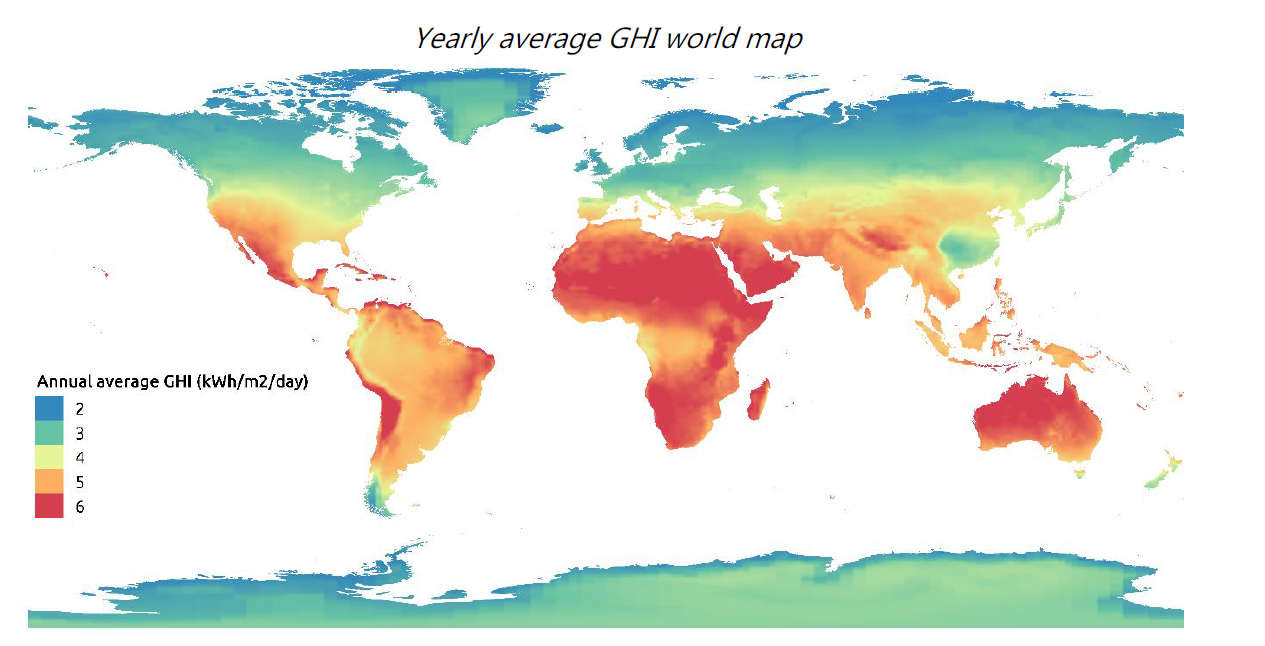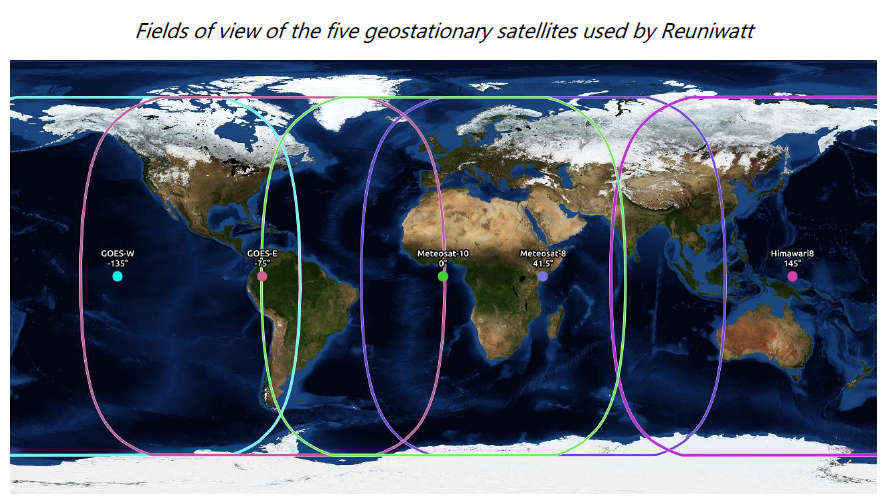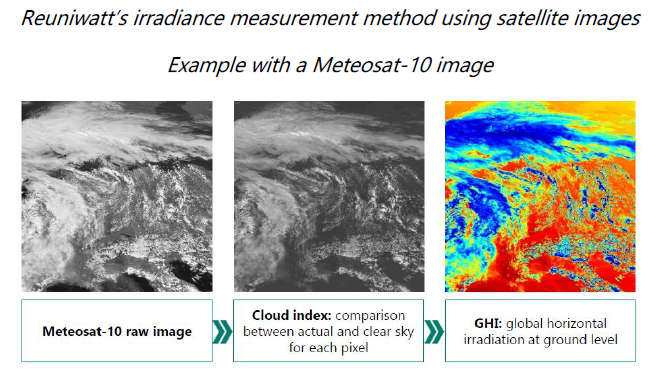(Go directly to
Importing ReuniWatt Data)
ReuniWatt (http://reuniwatt.com/en/irradiance-data-solar-project-development/)
provides hourly solar radiation and
meteorological data derived from 5 satellites, worlwide, in the form of
time-series and
TMY files.
Data covers useful information for PVSyst:
·Global horizontal irradiance (GHI or GlobHor)
·Diffuse horizontal irradiance (DiffHor)
·Direct normal irradiance (DNI or BeamNor)
·Wind Speed
·Temperature
·Aerosol Optical Depth (AOD) - to be used in the future by PVSYST
·Precipitable water (pw) - to be used in the future by PVSYST
In the ReuniWatt irradiance dataset, please note that :
·the effect of far shadings from mountains at sunrise and sunset is not included, which means that in mountaneous regions an horizon mask must be further applied in the project area of PVSyst.
·the diffuse circumsolar radiation is included in the DNI component (direct normal), which means that the data is not compatible with the use of the Perez-transposition model.
ReuniWatt data are available for pay.

Details of
the Method
ReuniWatt retrieves up to 15 years of data from the
following geostationary meteorological satellites
: Meteosat-10,
Meteosat-8,
GOES-E,
GOES-W,
Himawari-8.

The processing chain - developed internally- is based on the
Heliosat-2 method, which was co-developed in 2004 by Reuniwatts
Chief Scientific Officer, Dr. Sylvain Cros. Images from
geostationary meteorological satellites broadband visible channel
are used to retrieve solar irradiance at a world scale with a high
spatial resolution going up to 1 km at nadir, with a sample time of
15 min. The general principle of such algorithms consists in
comparing the reflectance observed at a given pixel with the
reflectance from the same pixel under clear sky (cloud-free)
conditions. A cloud index is computed from this difference. This
cloud index is used as a linear attenuation factor of the simulated
irradiance under clear sky. An internal clear-sky model is used
during the post-processing chain. Processed data are recalibrated
against ground stations.
